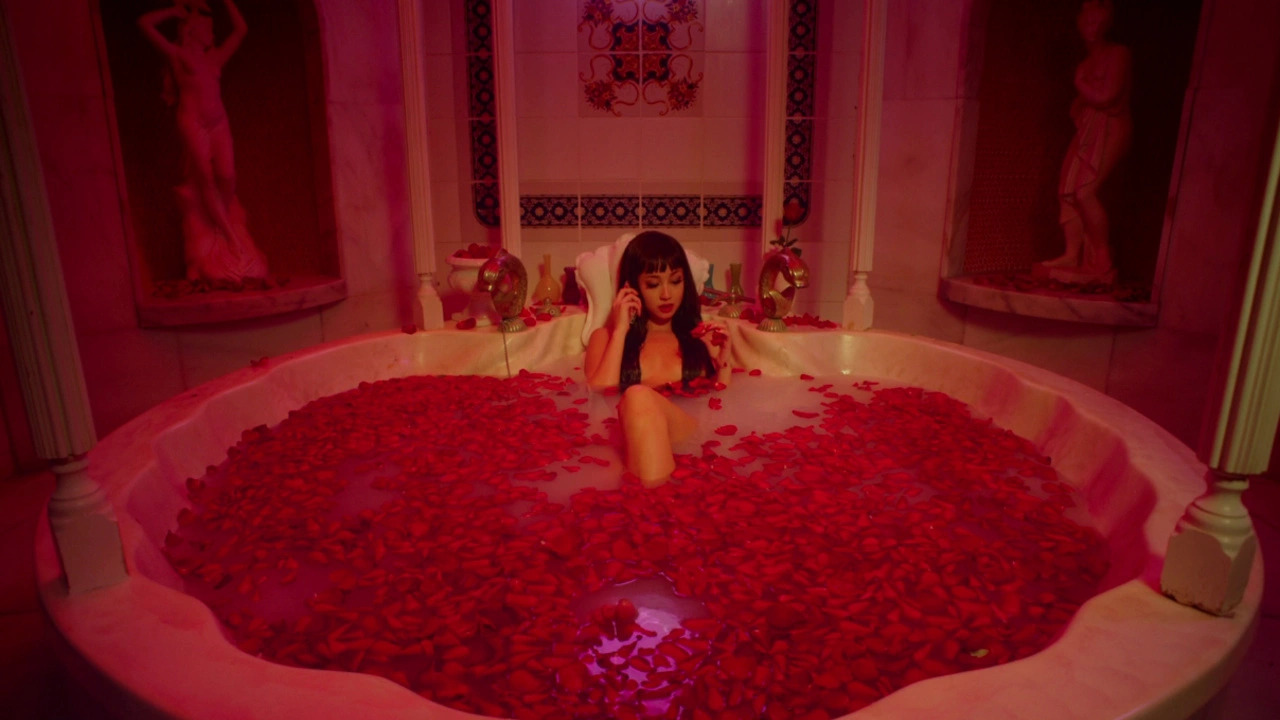Liliko is a famous model who begins dabbling into acting and music. She’s beautiful, but that beauty was obtained by various cosmetic surgery procedures. As her body, career and mental state begin to break down, she decides to bring as many people down along with her.

Kyoko Okazaki’s Helter Skelter is a surreal look into the dark side of fame. While it’s a well-tread territory, Okazaki’s skill at presenting Liliko’s descent is disturbing and harrowing as she pulls more and more people into her immoral world.
Okazaki’s loose, almost sketchy lines give the manga an almost punk-rock feel. While her style is far from the mainstream manga most people are used to, it’s well-suited to this story. Liliko is all big eyes and pouty lips and is someone who is unafraid to use her sexuality to victimize others. She’s not particularly likable and she’s often hard to watch but she makes for a compelling figure regardless.
Midway through the manga, a police inspector finds himself drawn into Liliko’s world as her pursues the cosmetic surgery clinic where she went since other women are dying or killing themselves.
The characters are maybe a bit thin — Liliko’s rivals are less characters and more just obstacles — but the story does feel more abstract and allegorical than something that’s fully supposed to reflect reality.
It’s hard to say if Liliko truly takes control of her life but she does find a resolution, even if it’s a dark one.
Helter Skelter (2012, directed by Mika Ninagawa) is a colorful nightmare — the super-saturated colors and campiness are part of the entire aesthetic. Ninagawa, with a background in fashion photography and an appreciation for over-the-top spectacles, is the perfect one to direct this. She and screenwriter Arisa Kaneko understand the source material well and do an amazing job of interpreting the comic’s themes to the screen.
Erika Sawajiri plays Liliko with an unhinged fearlessness. Her Liliko is cold and often cruel, using her beauty and status to get exactly what she wants. She doesn’t seem worried about making Liliko redeemable.
I appreciated how the manga’s storyline was rearranged a bit — the inspector is introduced earlier and is more integrated into the plot — but it remains pretty true to the comic, not shying away from sex and nudity and even ramping up some of the body horror present in the comic.
This movie has some of the most uncomfortable sex scenes I’ve ever seen. They’re fairly explicit but they’re far from erotic. Liliko is often a predatory mess and the way she manipulates her manager and her manager’s boyfriend into a sexual relationship.
Ninagawa crafts some terrifying and gorgeous images throughout, from Liloko’s breakdown on the set of a talk show to one of the final sequences as Liliko destroys her looks (and therefore her persona) during a press conference. It’s often hard to know what’s happening in reality and what’s just happening in Liliko’s head and as the weirdness increases, the movie becomes more and more intriguing.
Is either version Helter Skelter for everyone? Absolutely not. However, I think you know if either (or both!) is for you. While I adore the manga, I do think the movie improves on a few things. Both are, though, an amazing journey through the ugly cost of fame and beauty.

